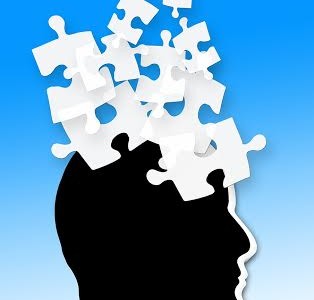Memory may take many forms.
Some people tend to remember concepts and ideas. This is conceptual memory. Conceptual memories contain vast amount of information in a highly abstract, logically ordered form (Sacks 2012). ‘Items’ of conceptual memory are not fixed. They are constantly changing, becoming modified with new experiences we have every day or when we think about them. Everything is continually updated, being re-categorised and re-generalised. When we retell the story we always bring some tiny changes into it. Conceptual memory is linear (one event follows another) and very flexible.
Perceptual memory is characterised by little or no conceptual capacity; instead, it contains sensory expressions. ‘Items’ of perceptual memory are without (verbal) names, not condensed (i.e. not filtered, not categorised, not summarised for a gist). They are remembered as the whole chunks of events and situations, including all the irrelevant (from the non-autistic perspective) stimuli. (Oliver Sacks notes that in such a memory there tends to be an immovable connection of scene and time, of content and context that results in the astounding powers of literal recall so common in autistic savants, along with difficulty extracting the salient features from these particular memories, in order to build a general sense and memory.) Perceptual memory (in whichever modality – visual, auditory, tactile, etc.) is characterised by undistinguished equality of all the stimuli – the large and small, the relevant and irrelevant get the same prominence. ‘Perceptual words’ are stored in the memory as unprocessed, uninterpreted, unrevised and unedited images. These images are fixed and do not change with time.
Many autistic individuals seem to possess remarkable perceptual memory. Some people may have different combinations of both.
What is it like to remember ‘perceptions’? It means, while remembering, people with autism actually experience the sensations they had when they first remembered the object, event or situation: they see, hear, feel, smell or taste it (in their mind). The thought about something produces the real experiences they had when encountered this thing or event for the first time. For instance, the thought of textures they hate might cause goose bumps and chills and a general sense of unease would follow (Willey 2014).
Temple Grandin compares her process of remembering things with a computer: ‘I store information in my head as if it were on a CD-ROM disc. When I recall something I have learned, I replay the video in my imagination.’
Although visual memory seems to be quite common in autism, it is by no means the only one. It depends on the modality that is most reliable for each autistic child. For instance, some have a very good auditory memory. They seem to have ‘audio tapes’ in their memory with detailed ‘sound pictures’ of objects, people, events. Others store ‘smell images’ in their memory; still others (with kinaesthetic memory) store ‘proprioceptive pictures’.
However, despite their excellent rote memory many autistic individuals are very forgetful. For instance, they may forget what they need to buy at the shop, but they are unable to forget the clothes someone was wearing or the arrangement of the furniture in the house they moved from many years ago.
So, if their memory is so good (actually, sometimes it is very difficult – if not impossible – for them to forget), why can’t autistic children answer the simplest questions, such as: ‘What did you do at school today?’
The answer may lie in the difficulty they have searching their own memory and retrieving information they want. While retrieving information (whether to answer a question or prepare a response) they have to ‘play’ the whole piece in their memory to find the right ‘word’ (image, situation, etc.).
Many autistic children are unable to recall memories unless they are triggered. They often cannot voluntarily ‘get access’ to their stored information. However, if cued or prompted with particular words, intonation, gestures, or surroundings they may astonish their parents (and even themselves) with the knowledge they have accumulated. They seem to have no conscious control on their ‘database’ and are dependent on the ‘right triggers’.
Teach the child a range of strategies for memorising and retrieving information, such as making stronger connections between ‘sensory words’ and ‘verbal labels’.
Create ‘daily diaries-dictionaries’ describing the day’s events, with key words representing ‘mental images’ in the preferred sensory modality – pictures or photographs of main events of the day (visual), objects or parts of objects to smell (olfactory) or touch (tactile), etc. – that can trigger remembering and help discuss what has happened during the day. These diaries may become weekly or monthly magazines, and then annals which can be gone through from time to time in order to create the connection between the stored memories and perceptual experiences.
References
Grandin, T. (2006) Thinking in Pictures. NY: Vinatege Books.
Sacks, O. (2012) An Anthropologist on Mars. London: Picador.
Willey (2014) Pretending to Be Normal. Jessica Kingsley Publishers.
Written by Olga Bogdashina on behalf of Integrated Treatment Services










